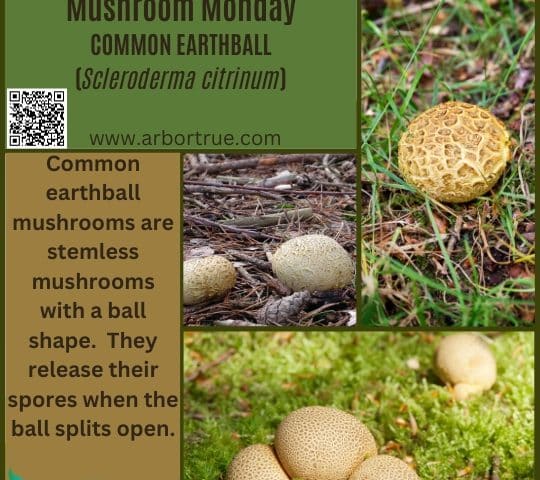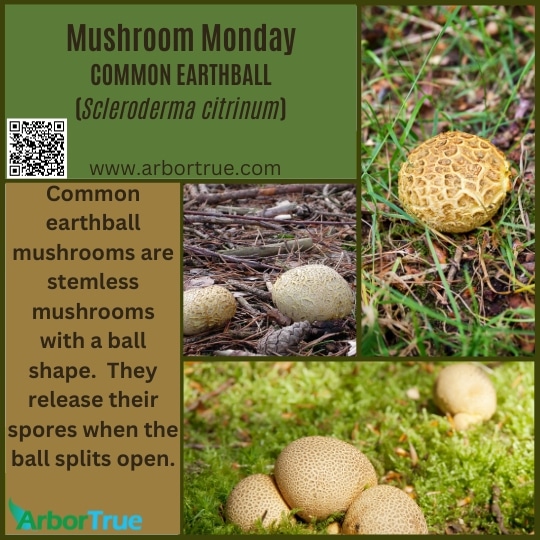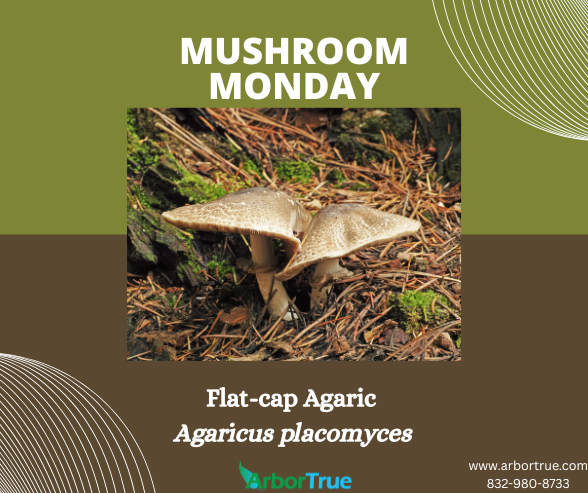
A New Christmas Tradition: A Living Christmas Tree
December 1, 2023
Twenty Gift Ideas for Someone Who Likes Trees
December 6, 2023

Monday Mushroom: The Common Earthball (Scleroderma citrinum)
The Monday Mushroom for today is the common earthball. The common earthball might have common in its name, but it’s anything but.
For one thing, the common earthball is a puffball-type mushroom. Puffballs are a really interesting type of mushroom. A puffball mushroom has spores that are on the inside of the ball of the mushroom and are released from it when the ball opens up. There are different types of puffball-type mushrooms and although they can have similar appearances, they aren’t necessarily closely related. Also, there are different species of earthball mushrooms and it can be hard to tell them apart.
The common earthball also has an interesting appearance. They are stemless and have a ball shape. This is different from some other mushrooms, such as button mushrooms that you might find in a store, that have a stem and a cap. Common earthball mushrooms can be large and can grow to about 1.5 to 9.5 inches in diameter and around 1 to 3.5 inches tall. They are yellowish brown in color and can turn greenish as the mushroom ages. The inside of a young common earthball is light in color, while the inside of a mature one is purplish black. They have a wart-like appearance, feel firm, and can smell unpleasant. They are quite interesting to see.
Common earthball mushrooms can be found in the woods in soil that is acidic, and in soil that is sandy. They can be found alone or with other common earthballs.
Keep in mind that the common earthball, like many earthball mushrooms, is poisonous and inedible for people.
In terms of its relationship with plants, common earthball mushrooms are mycorrhizal. This basically means they have a connection with plant roots in a way that benefits both the mushroom and the plant. Another example of a mycorrhizal mushroom is the morel, which we’ve featured in a past Monday Mushroom post.
An interesting fact is that there is a rare mushroom that is a parasite for the common earthball. A mushroom with a mushroom. The parasitic mushroom is called Pseudoboletus parasiticus and the only organism it is a parasite for is the common earthball.
As you can see, the common earthball is quite interesting. If you want to learn about other interesting mushrooms, check out our other Mushroom Monday posts.



